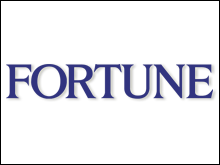How big will your raise be next year?
What to expect in 2006, according to a new survey, and strategies to boost your paycheck. Plus, AARP expands its list of the best companies for employees over 50.
Employers in a few metropolitan areas say they plan to hand out raises that are somewhat higher than the national average. These include ones in Los Angeles (4.3 percent), San Francisco (4 percent), Washington, D.C., (3.9 percent), and Houston (3.9 percent). But no matter where you live, says Ken Abosch, a Hewitt practice leader, "rising health-care and energy costs have the potential to eat up a greater share of employees' take-home pay." So even if you do get a raise, you may end up no better off. Don't despair. There's a silver lining to all this gloom. While base pay stagnates, incentive pay continues to gain ground. Consider: In 2005, company spending on variable pay (bonuses, stock options, and other goodies linked to performance) has accounted for 11.4 percent of payroll, up from 9.5 percent in 2004. That will continue into 2006. "Variable pay has actually been growing since the early '90s, with 78 percent of companies now offering at least one broad-based incentive plan, up from 51 percent in 1991," Abosch notes. "Companies like variable-pay awards because they're self-funding and only pay out if certain performance criteria are met. For employees, these plans offer a chance to be rewarded for meeting their goals." So what does it all mean? Well, first, if you get a puny raise next year, try asking for a bonus based on achieving certain results. (You and your boss will have to agree on these goals beforehand. Here's where good negotiating skills really come in handy.) If that strategy doesn't work out, keep in mind that 42 percent of employers fear budget constraints are hampering their ability to retain and attract top talent, according to the Hewitt report. To keep their stars from quitting, 77 percent say they're willing to make "equity pay adjustments" to bring key employees' compensation in line with prevailing market rates. Assuming you're one of the people your company would hate to lose, do some research and find out if you're underpaid by comparison with your peers at other companies. If so, you might be able to snag a bigger-than-average raise, or a fatter bonus. Another possibility: An employer that really wants you to stick around may be inclined to get creative. Cash-strapped companies, the Hewitt report notes, "are more often turning to [offering their best people] flexible work arrangements (52 percent), retention bonuses (41 percent), stock awards (30 percent), and part-time work options (30 percent)." If you're a key employee who has been hankering for, say, more vacation time, you might find that next year's measly raise affords you the perfect chance to ask for it. Now, folks, a bit of news on an unrelated topic: In a column last spring, "Best Companies for Employees Over 50", I talked about AARP's list of 35 employers rated best for older workers. The nonprofit has just come out with an updated list, ranking 50 companies. They're scattered across 25 states, but Michigan leads the pack with six winners. Virginia, home to five of the top 50, came in second. As in the past, health-care companies turn up most often in the ranking, followed by financial services firms and educational institutions. Still, the number-one winner is Stanley Consultants, an Iowa-based engineering, environmental, and construction company. What makes Stanley stellar? For one thing, the company offers phased-retirement arrangements that allow employees to reduce their work schedules gradually before full retirement -- a trend that will probably become more widespread as more baby boomers begin to reach retirement age. In addition, Stanley has set up an innovative "time-off bank" that lets workers donate unused vacation time that other employees can spend to take care of family members. The company also contributes to a 401(k) account for each employee, regardless of whether the employee participates. To see the full list of the 50 best, and find out why each was selected, go to aarp.org and click on "Money and Work." |
 |
||||||||||||||||||||||||||

